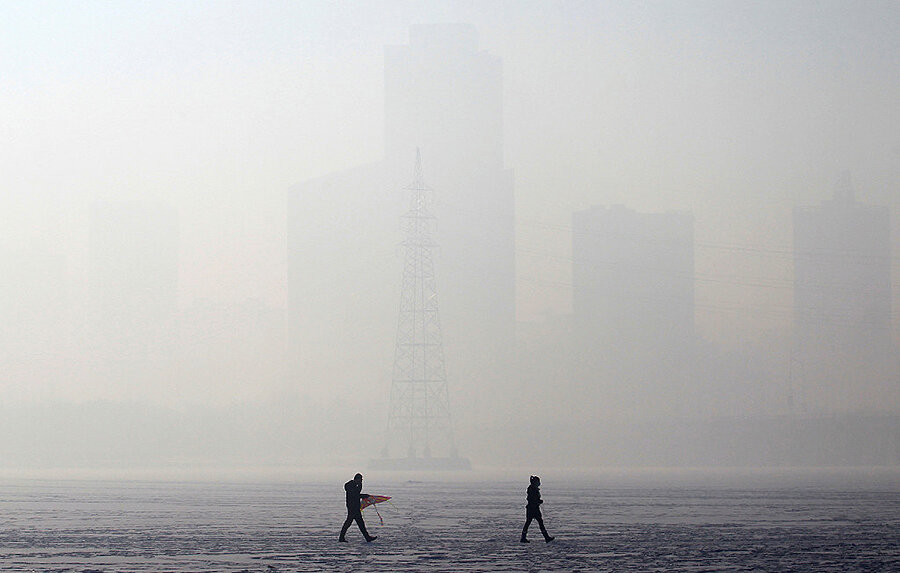How melting Arctic sea ice is keeping smog over China
Loading...
“We will make our skies blue again,” vowed Chinese Premier Li Keqiang earlier this month, pledging aggressive new steps to combat China’s notorious smog.
For urban residents who have long struggled with unhealthy pollution levels, steps like “round-the-clock online monitoring” of industrial polluters, as Mr. Li introduced during the annual National People's Congress, and the creation of an environmental police force likely came as welcome news.
But a study published Wednesday adds a possible wrinkle to China’s fight for blue skies. Climate change – in particular, the melting of Arctic sea ice – makes the country's smog even more likely to stay where it is.
“The ventilation is getting worse,” one of the study’s co-authors, Georgia Tech atmospheric scientist Yuhang Wang, told Science Magazine. “We think climate change, as it is driving rapid warming of the Arctic, is having a large effect on pollution in China.”
Wind plays an important role in clearing out smog; cities like Los Angeles and Mexico City have the bad luck to be ringed by mountains that trap their pollutants. The researchers wanted to understand what role wind was – or wasn’t – playing in China’s smog problem. So they created the “Pollution Potential Index” (PPI), using historic data on wind and air temperatures in eastern China.
According to Dr. Wang, the index values showed that ventilation conditions in January 2013 – when Beijing and other Chinese cities were in the midst of an “air-pocalyse” – “were the worst in 3 decades of data.”
A far-reaching chain of events, the team concluded, had led to these sooty skies. The fall of 2012 had seen record-low levels of Arctic sea ice. Some scientists suggest less ice could lead to more evaporation, and then more snowfall, a pattern observed that winter in Siberia. That change, in turn, disturbed the air-pressure systems over Asia, pushing the monsoon wind currents that normally blow through eastern China towards Japan, instead.
“We think climate change, as it is driving rapid warming of the Arctic, is having a large effect on pollution in China,” Wang concluded.
In recent decades, scientists have been learning how atmospheric changes in one region of the globe can reverberate over vast distances. While this study advances their knowledge, its implications aren’t just academic: One study last year estimated that China’s air pollution contributed to about 4,000 people's deaths every day.
Some of the Chinese government’s actions on this issue have raised eyebrows. The pollution readings put out by Beijing’s municipal government, for instance, can be well below those issued by the US Embassy. And the new study suggests that, as Arctic sea ice continues to dwindle, China’s leaders could lose a natural helping hand against smog.
But Li’s recent announcement of new pollution controls underscores a marked shift in tone in recent years, as China intensifies its efforts to fight pollution and global warming alike. Growing public discontent with smog has helped move environmental issues to the front of the Chinese government's agenda. Earlier this month, government data showed the country's coal consumption dropping for the third year in a row.
“The fundamentals of the economy in China are very favorable for climate action,” Li Shuo, a climate policy analyst at Greenpeace East Asia, told The Christian Science Monitor at the time. “We’re now missing the diplomatic engine from Washington. China has a good opportunity to step up its game.”
This report includes material from the Associated Press.








